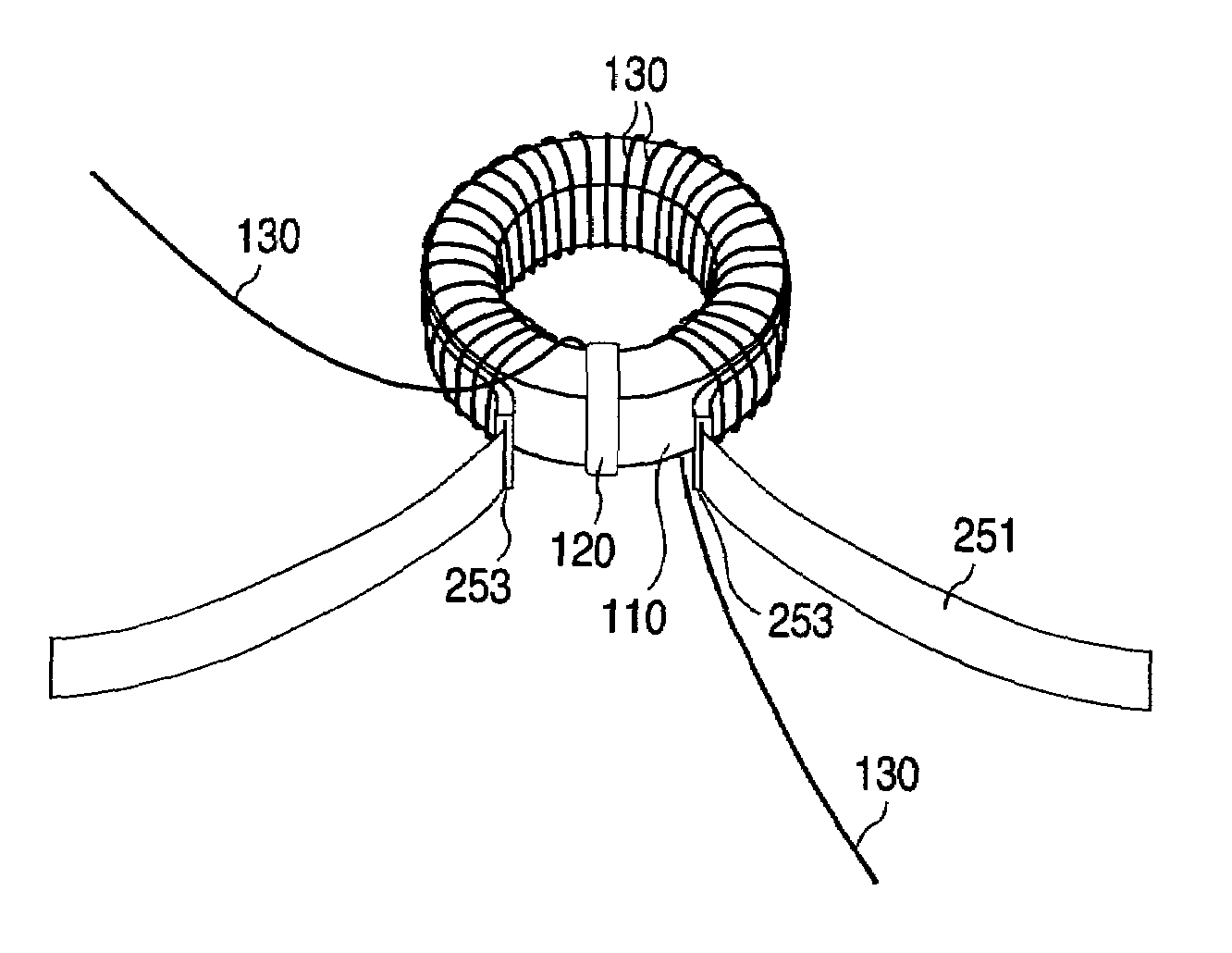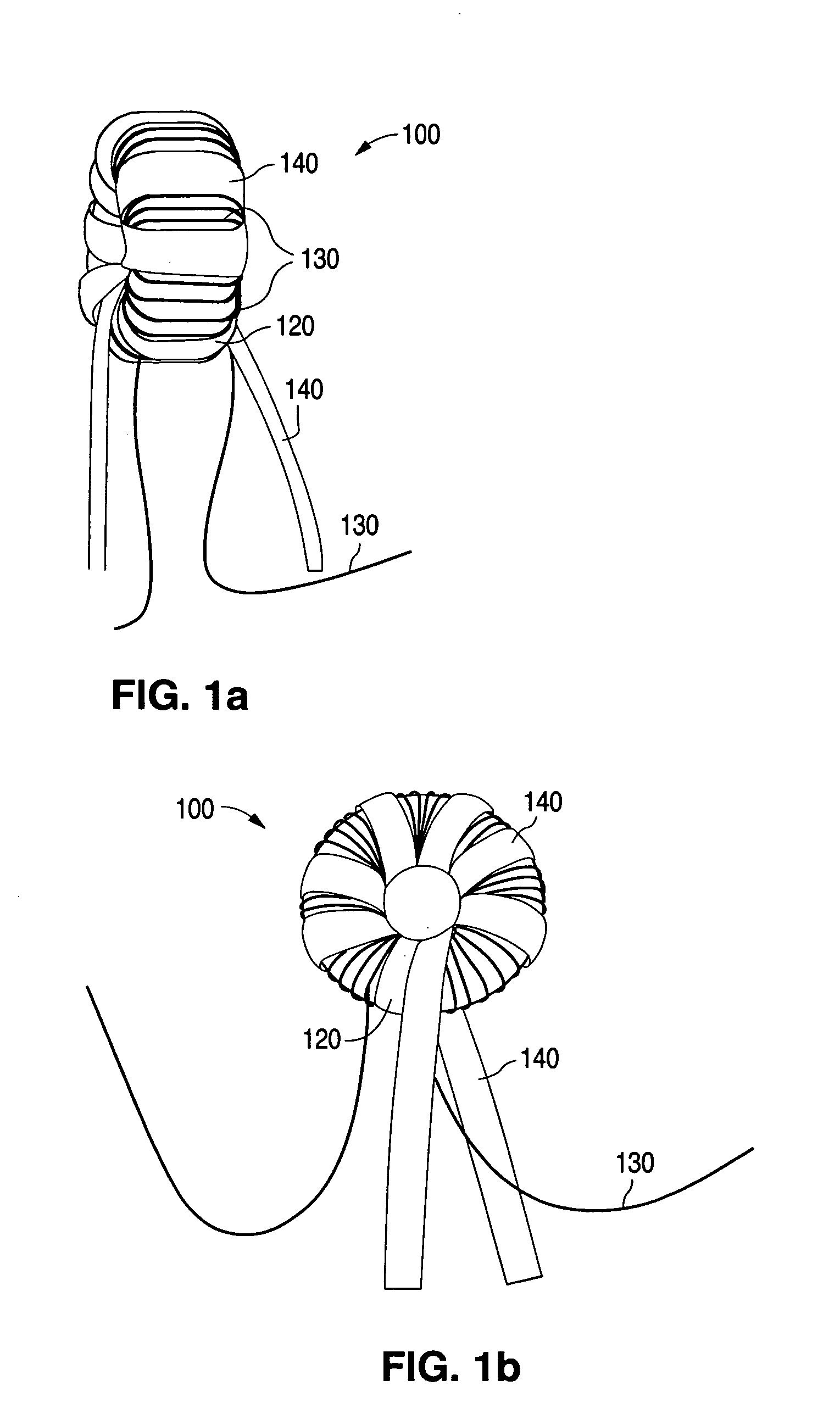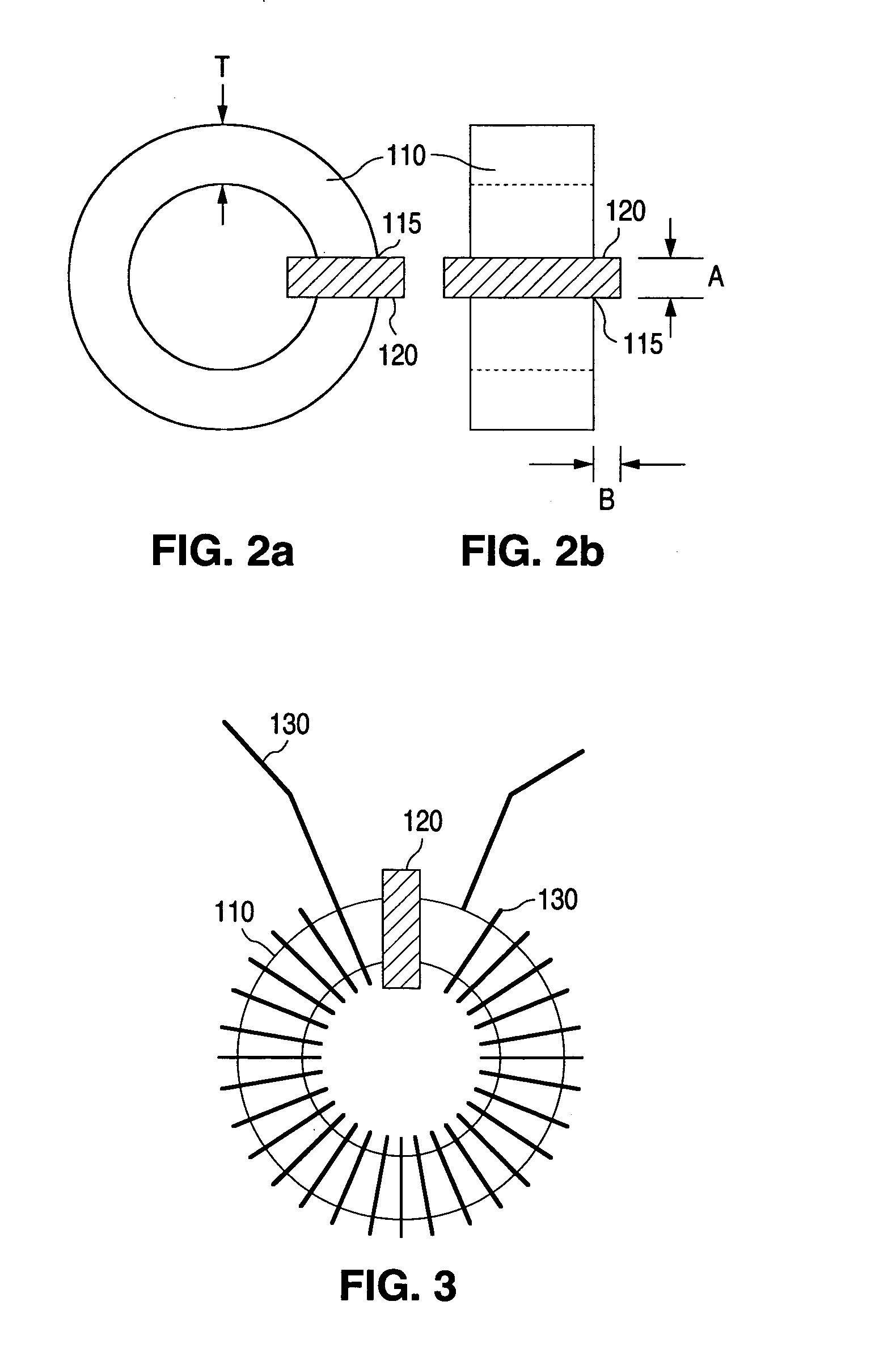Insulation and integrated heat sink for high frequency, low output voltage toroidal inductors and transformers
a toroidal inductors and transformer technology, applied in transformers, transformer/inductance details, electrical equipment, etc., can solve the problems of reducing convective heat transfer, difficulty in removing heat from transformers, and several limitations of bobbin-wound transformers, so as to improve power density, improve thermal performance, and reduce copper consumption
- Summary
- Abstract
- Description
- Claims
- Application Information
AI Technical Summary
Benefits of technology
Problems solved by technology
Method used
Image
Examples
first embodiment
[0032]a toroidal transformer according to the present invention is now described with reference to FIGS. 1–5. FIGS. 1a and 1b are edge and left side perspective views, respectively, of a toroidal transformer 100. FIGS. 1a and 1b show primary winding 130 and a secondary winding 140 wrapped around the primary wiring to form a spiral or helix. Transformer 100 is particularly well suited for applications where sufficient air flow is available, as both the primary and secondary windings 130 and 140 are located about the outer surface of transformer 100. In addition, transformer 100 offers extremely low leakage inductance and inter-winding capacitance, and has a very small footprint.
[0033]FIGS. 2a and 2b show a left side view and a top edge view, respectively, of the innermost portions of toroidal transformer 100 of the present invention. A suitable sized coated toroidal core 110 is selected to accommodate the required electrical ratings, frequency range and power handling capacity of tra...
second embodiment
[0048]To summarize, the preferred steps of the method of constructing the present invention include: (1) wrapping margin tape 120 around section 115 of coated core 110; (2) applying a thermally conductive, electrically insulating, compressible silicon sleeve 253 onto copper strap 251 to form heat sink 250; (3) wrapping the sleeve 253 portion of heat sink 251 around the outer circumference of core 110 so the exposed ends 255 of strap 251 extend from the outer circumference adjacent margin tape 120 on the top edge of core 110; (5) tightly winding primary winding 130 on core 110 with sleeved portion of heat sink 250 sandwiched between core 110 and primary winding 130; (6) applying a plurality of layers of reinforced insulating sleeve 143 onto a copper strip 141 to form secondary winding 140; and (6) wrapping the sleeved portion of secondary winding 140 over primary winding 130 to form a helix or spiral with the exposed ends of strip 141 extending from the outer circumference of core 11...
PUM
| Property | Measurement | Unit |
|---|---|---|
| thickness | aaaaa | aaaaa |
| size | aaaaa | aaaaa |
| thickness | aaaaa | aaaaa |
Abstract
Description
Claims
Application Information
 Login to View More
Login to View More - R&D
- Intellectual Property
- Life Sciences
- Materials
- Tech Scout
- Unparalleled Data Quality
- Higher Quality Content
- 60% Fewer Hallucinations
Browse by: Latest US Patents, China's latest patents, Technical Efficacy Thesaurus, Application Domain, Technology Topic, Popular Technical Reports.
© 2025 PatSnap. All rights reserved.Legal|Privacy policy|Modern Slavery Act Transparency Statement|Sitemap|About US| Contact US: help@patsnap.com



